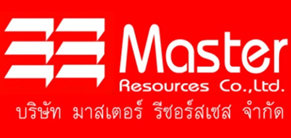Tile and Stone are Maintenance Free If I had a dollar for every time I heard this statement I wouldn’t need to buy lottery tickets. There is no doubt that hard surfaces such as ceramic tile and natural stone are becoming the benchmark as the practical commercial/residential floor and wall finish. As a cleaning or maintenance professional you will no doubt realize just how much more tile and stone is out there in your contracts. You will also notice two other very important facts. Firstly there is an ever increasing number of different types of tile and stone and secondly that they are NOT MAINTENANCE FREE.
Let me deal with the former fact first. Ceramic tile and natural stone have become so popular that manufacturers and distributors have to satisfy the public’s appetite for an ever-increasing selection. The ceramic industry has reacted by producing Porcelain tiles. These come in polished, glazed, unglazed, structured, honed, salt glaze finish the list is endless. The natural stone industry is introducing an even more varied selection. Limestone from all of the globe, basalt, quartzite, sandstone, shell stone, granite, alabaster, marble to name just a few, and many of these in an even wider array of finishes; honed, polished, flamed, tempered etc.
The public’s desire for choice is certainly being met. However this huge selection is making a mockery of the “maintenance free” tag. This ever increasing range of material is making the simple job of maintenance more complex and this is in many cases not be serviced or recognized by the maintenance industry. An example of this is Granite that has been used as a commercial floor and wall finish for many years. Historically it was maintained using neutral cleaners without any real drama.
However the types of granite were limited to the denser varieties, which responded well to this procedure. Fast-forward to today and the granite selection is far greater. Colour and aesthetics are king resulting in granites with more colour but also a wider array of physical characteristics such as hardness, porosity and chemical resistance. These characteristics dramatically impact the way the stone can be maintained. The mop and bucket of neutral cleaner while working well on traditional Absolute Black granite (a very dense stain resistant variety) will not do the job on the more fashionable lighter colours that are very porous. This fact of change is the same throughout most of the other types of stone and tile where old traditional methods and products no longer cater for the increasing range of materials.
Maintenance Free. In some ways you can understand how this term came about as a reference to tile and stone finishes. The historically small range of glazed or vitrified tile and denser stone was easy to maintain. They all had similar physical characteristics such as low porosity making it easy to maintain them with the staple mop and bucket regime. But this has changed. Stones such as marble and limestone; tiles such as enriched anti-slip and salt glazed porcelain CANNOT be maintained the old way. Products like these require the new methods of maintenance to be applied for success. The new approach encompasses three important facets: Sealing, Cleaning and Machinery. A fashionable polished or honed limestone floor is a good example. If you try and maintain such a floor with the old techniques it will become soiled very quickly. It will show etch marks when exposed to dilute household acids such as wine, orange juice to name a few, dulling the polished finish.
Traditional methods will simply not work! The maintenance of the limestone starts by protecting the stone from contaminants by applying a compatible specialist limestone sealer. Routine cleaning can now take place however also with a “specialist” cleaner. Limestone is composed of mainly calcium carbonate and many cleaning products will adversely react with the calcium dissolving it and damaging the stone. The cleaner must also be compatible with the sealer so it does not strip or damage the protective sealer application. The last piece of the puzzle is using the correct machinery. All tile and stone is installed using a grout joint. Being concave it does a nice job of collecting the dirt. Many finishes are textured, either for aesthetics or for anti-slip reasons. These characteristics result in a floor that cannot be cleaned by simple mopping. Our limestone example has to be maintained with a scheduled variety of machinery. A mop can be used for daily cleaning. A brush and scrubbing should be introduced periodically to take care of the grout joint and surface texture and lastly extraction should be used from time to time to completely remove all existing dirt.
The bottom line is that today’s proliferation of tile and stone both in use and selection means the “old ways” will not cut the mustard. Specialist sealers, cleaning products and machinery are a MUST if the maintenance industry is to maintain these surfaces properly.
In most cases you won’t find these specialized products available through the traditional industry providers. This is mainly due to the fact that an intimate knowledge of tile and stone is required to manufacture and supply such products. Hence you have to look to the stone and tile industries for help. The importance of this is not lost on the tile and stone industries however as some of these companies are now starting to make their products available to the cleaning industry. They understand that tile and stone are NOT Maintenance free and provide a wide selection of products to make their maintenance easy. I have no doubt that the two industries (Maintenance & Tile and Stone) are on a mutually beneficial collision course.
